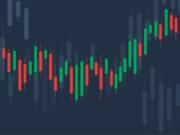If you’ve been reading my lists for a fair amount of time, I don’t doubt you’ve seen tips passed on for the sake of just about every type of stock; there’s no shortage of types. But, I choose subjects for valid reasons that typically become apparent on their own. To emphasize the personal inner workings of businesses the stocks represent — for example, which executive is getting married next weekend — would be irrelevant. The factors needed for a stock to be recommendable don’t have to be complicated.
Aside from the closest-to-ideal timing and the index or sector within which a given stock exists, what always helps investors in grouping tickers is simply how much the company is worth. Household tech names, collections like ETFs or REITs, and global retailers likely have market valuations of over $10 billion, constituting either large-caps ($10 to $200 billion) or mega-caps ($200 billion +). Working backward to the opposing end of the spectrum, we have mid-cap stocks (worth $2 to $10 billion) and today’s small-caps, less than $2 billion but more than $300 million. Less than $300 million takes us into micro-cap, or “penny stock,” territory. This valuation system can prove helpful and rewarding when applied thoughtfully.
Let’s unpack three healthy dividend stocks performing well despite heavy market uncertainties. With light valuations and value pricing, investors can benefit not only from passive dividend income but impressive upside potential. The experts have weighed in— buy and hold:
DHT Holdings Inc (DHT)
DHT Holdings Inc (DHT) is a transportation company mainly engaged in marine logistics, with a fleet of oil tankers. DHT functions in three segments, each specific to a port location; DHT operates primarily through integrated management firms in Singapore, Monaco, and Oslo, Norway. DHT was established in 2005, and its headquarters are in Hamilton, Bermuda.
DHT offers a lot for a prospective investor to like: It has easily surpassed the expectations of Wall Street analysts during earnings season and shows robust metrics. DHT has a market cap of roughly $1.8 billion and, as of the last twelve months on record, has revenue of $454 million at 88 cents per share, from which DHT’s net margin of 13.66% pulled a $61.5 million profit. DHT has a forward P/E of 10.2x, debt to equity of 37.14%, and a 10-day average volume of over 2.25 million shares. DHT’s growth, year-over-year: Revenue (+100.27%); EPS (+609.81%); Operating Income (+1370.82%); and Net Income (+2238.79%). DHT has a dividend yield of 13.65%, with a quarterly payout of 38 cents ($1.52/yr) per share. Analysts have marked DHT with a median price target of $12, with a high of $15.10 and a low of $11. While already up over 27% year-to-date, DHT still only wants to grow, with its new price range suggesting a 34% increase over current pricing. Analysts agree strongly with DHT’s bargain of a buy rating.
Eagle Bulk Shipping Inc (EGLE)
Eagle Bulk Shipping Inc (EGLE) is a ship owner and operator that carries merchants, workers, and consumers all over the globe. EGLE runs fleets of state-of-the-art Supramax and Ultramax dry bulk boats, and its internal operations include admin, technical, and commercial management. Coal, iron ore, fertilizer, and cement are just a few of EGLE‘s featured commodities. EGLE‘s estimated fifty-three vessels have a total deadweight (dwt) carrying capacity of around 3 million, with crane-handling capacities ranging from 50,000 to 65,000. Headquartered comfortably in Stamford, CT, EGLE was founded in 2005.
Timing is on our side, as EGLE is down 5.67% YTD and near the bottom of its 52-week price range. What caught my eye immediately was that EGLE’s TTM revenue of $720 million flies right by its $647 million cap. With a net profit margin of 34.45%, EGLE unveiled a profit of $248 million and a time-sensitive EPS at $15.20 per share. EGLE has a P/E of 3.1x, a P/S of 1.13x, a DTE of 40.83%, and an ROE of 33.38%. Despite slight earnings misses, EGLE has forecasted EPS growth of 84% and a free cash flow of $207 million. EGLE presently has a dividend yield of 5.09%, with a quarterly payout of 60 cents ($2.40/yr) per share. Analysts give EGLE a median price target of $68, with a high of $85 and a low of $55. Its new price range allows for an 80% upside over its previous price, and the consensus is to buy and hold EGLE today.
Tennant Co (TNC)
Tennant Co (TNC)’s humble mission is to create and market innovative services and products within a competitive industry. TNC provides cleaning tools, solutions, equipment maintenance, and inventory tracking software. TNC offers products in various settings, including distribution centers, offices, schools, and medical facilities. TNC’s products are marketed under the Tennant brand and multiple private-label brands. TNC has factories and offices in Asia, the Middle East, Europe, and the Americas. TNC was founded in 1870 in Minneapolis, MN, where its headquarters still sit.
TNC, with a market cap of $1.2 billion, has a trailing twelve-month revenue of $1.1 billion at $3.55 per share, from which it profited $66.3 million. TNC has a forward P/E of 15.60x and a P/S of 1.05x; it is forecasted to report current-quarter sales of $272.5 million, with 84 cents per share. TNC shows year-over-year growth as follows: Revenue (+5.28%); Net Income (+207.21%); Net Profit Margin (+186%); and EPS (+201.3%). TNC has a dividend yield of 1.60%, with a quarterly payout of 26 cents ($1.04/yr) per share. The analysts who offer yearly average price ranges have assigned TNC a median price target of $83, with a high of $98 and a low of $82. For a novel look at TNC’s impressive upside potential, even hitting the lowest price point would represent close to a 25% increase from prior pricing. As it comfortably flies under the radar of others, we should take pride in being privy to TNC’s benefits. The analysts have weighed in, too: buy and hold.
Read Next – [Fed Control] 4 Urgent Steps to Shield Your Money
The Federal Reserve is about to acquire new powers to track and even control your money
Starting as soon as May 2023!
The Fed calls its new program FedNOW.
I call it Fed Control.
Why? Because it not only aims to centralize private payments systems — like Apple Pay, PayPal, Venmo, Zelle and others — for the sake of making them “more efficient” …
It also could give the Fed direct surveillance access — and ultimately control — over nearly all banking transactions by individuals and private enterprise.
Finding it hard to believe our government would snoop around in your personal transactions? Really?
Then just remember what the NSA and FBI did under their so-called PRISM program that spied on the personal emails, chats and videos of millions of Americans who were not even suspected of any crime or bad behavior!
FedNOW will give the Federal Reserve access to data that is even more critical — on virtually every penny you spend, receive or transfer.
Fortunately, there are four basic steps you can take to protect your money.
I lay them out in my free emergency broadcast.
Just click here, and my presentation should start playing on your screen immediately (no registration required).















 and then
and then